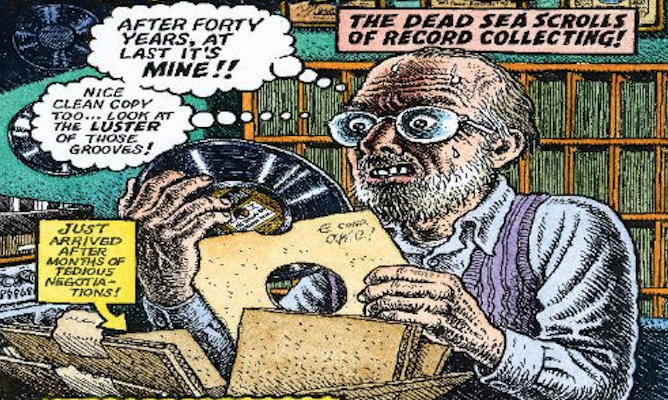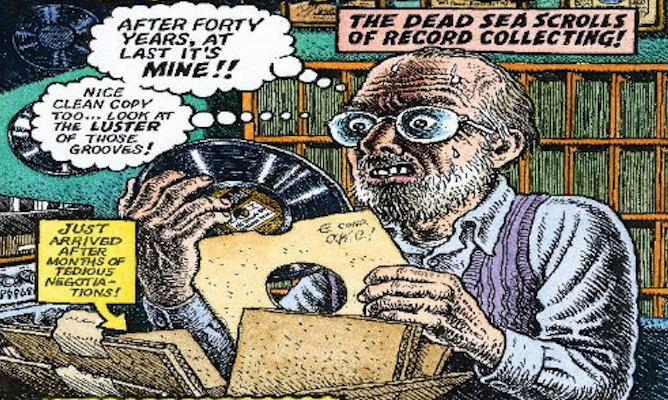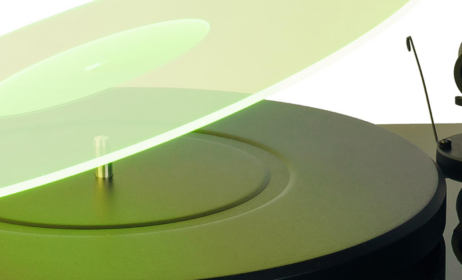Published on
July 30, 2013
Category
Features

A psychological diagnosis of the ‘sickness’ known more commonly as record collecting.
Everyone who collects records does so for different reasons – some for no reason at all. It’s a fiendishly difficult compulsion to explain – one that can turn rational, straight-thinking individuals into excitable and obsessive hoarders; voracious completists with Vitamin D deficiencies and a penchant for alphabetisation. At least, that’s how the stereotype goes.
Approaching record collecting from a sociological, even anthropological perspective in his new book Contemporary Collecting: Objects, Practices and the Fate of Things, American professor and lifelong record collector Kevin M. Moist comes to a slightly different conclusion. You could call it a defence. You could call it preaching to the converted, or perhaps more pertinently, a collective denial of the damned; like a psychiatrist telling his patient, “it’s not you, it’s everyone else”. Importantly, regardless of the conclusions, Moist’s analysis goes deeper than the ubiquitous protestations that “vinyl just sounds better”.
Taken from the chapter “Record Collecting as Cultural Anthropology”, the extract published below asks the fundamental question of why we collect records, drawing on the wisdom of music critic Simon Reynolds (a portion of whose updated rave history Energy Flash we published last month) as well as a range of sociologists, to attempt to disseminate the strange allure of collecting records.
Words: Kevin M. Moist
There are many reasons for collecting recorded music, both by individuals and institutions, and various situations in which that collecting takes place. Sociologist Roy Shuker described a wide range of them in Wax Trash and Vinyl Treasures: Record Collecting as a Social Practice, and I won’t try to list them all here. He noted one thing they mostly have in common: Whereas collecting many types of objects involves setting them aside and removing them from regular use, records by necessity “retain a strong element of use value – people will play them,” because that is the only way to experience their contents.
I have heard tales of extreme record collectors whose new acquisitions are immediately sealed hermetically and hidden away in light-and temperature-controlled vaults; however, no one I know seems to have actually met such a character. Collectors, in my experience, generally love to share what they find, with friends via listening sessions or by swapping mixes, or more publicly as DJs or music writers. They would agree with rock musician Jeff Connolly that the whole point is “using the music”: “There is no joy in ownership,” he said. “The joy comes when you play the record.” Music critic Simon Reynolds described his collection as “material with use value, whether that was pleasure or research.”
In his insightful book The Recording Angel: Music, Records and Culture from Aristotle to Zappa, Evan Eisenberg wrote about the unique motivations that lie behind the collecting of “cultural objects” such as records, noting five motifs as particularly significant. The first relates to time: “the need to make beauty and pleasure permanent,” based in a fear of its possible/likely disappearance, a motive common to cultural preservation efforts of all kinds. His second reason is related to the first: “the need to comprehend beauty” in that which is collected, which can become “more beautiful the better it’s understood… [and] certainly owning a book or record permits one to study the work repeatedly and at one’s convenience.” Third, he discussed the “need to distinguish oneself as a consumer,” to become “heroic consumers” who “spend on a heroic scale, perhaps, or with heroic discrimination,” acquiring the rarest items or the most complete set, or going to the greatest lengths for a purchase. The forth motive has to do with nostalgia, a sense of belonging felt through collecting bits of the past; the collection itself serves as a bridge, and “each object connects its owner with two eras, that of its creation and that of its acquisition.” The final reason is about the quest for social capital in all its forms, “the need to impress others, or oneself.”
As suggested by his book’s subtitle, Eisenberg is interested in record collecting from a philosophical point of view, in the existential, ontological, or aesthetic significance of recorded music. Such an enlightened perspective obviously contrasts a bit with most popular images of record collecting. Depictions of record collectors in such stories as the comic book/movie Ghost World and the novel/movie High Fidelity tend toward the unbalanced and antisocial, portraying record collecting as a symptom of some form of psychological disorder. Music writer Simon Reynolds suggested that music collecting can wander off track into destructive behaviour – obsessiveness, completism, and consumer fetishism – often combined with an “idiot savant” level of data accumulation. He thinks of it as a “particularly ‘masculine’ sickness… related to the impulse to control, contain, master what actually masters, ravishes, disorganizes you.” Or, he says, perhaps record collecting should be seen as a “perverse consumerism” that literally “eats up your life.”
Of course, human beings have proven capable of all kinds of extreme behaviour, and critics can always find an example that fits a loaded stereotype. But collecting scholar Russell Belk believes such negative images of collectors serve as a kind of social defense mechanism for all consumers, an “unwitting metaphor for our own fears of unbridled materialism in the marketplace.” The stereotypes play the scapegoat role: “We escape blame ourselves by caricaturing the collector as being the silly non-rational consumer in comparison to our own equally obsessive but less focused consumption behaviour.” In fact, Belk’s research indicates that collectors are often more careful about their consumer activities than are non-collectors, adjusting to limitations in time, money, and effort by being self-aware and conscious in their purchasing decisions.
Contemporary Collecting: Objects, Practices and the Fate of Things, edited by Kevin M. Moist and David Banash has been published by Scarecrow Press and is out now. Click HERE for more info.






